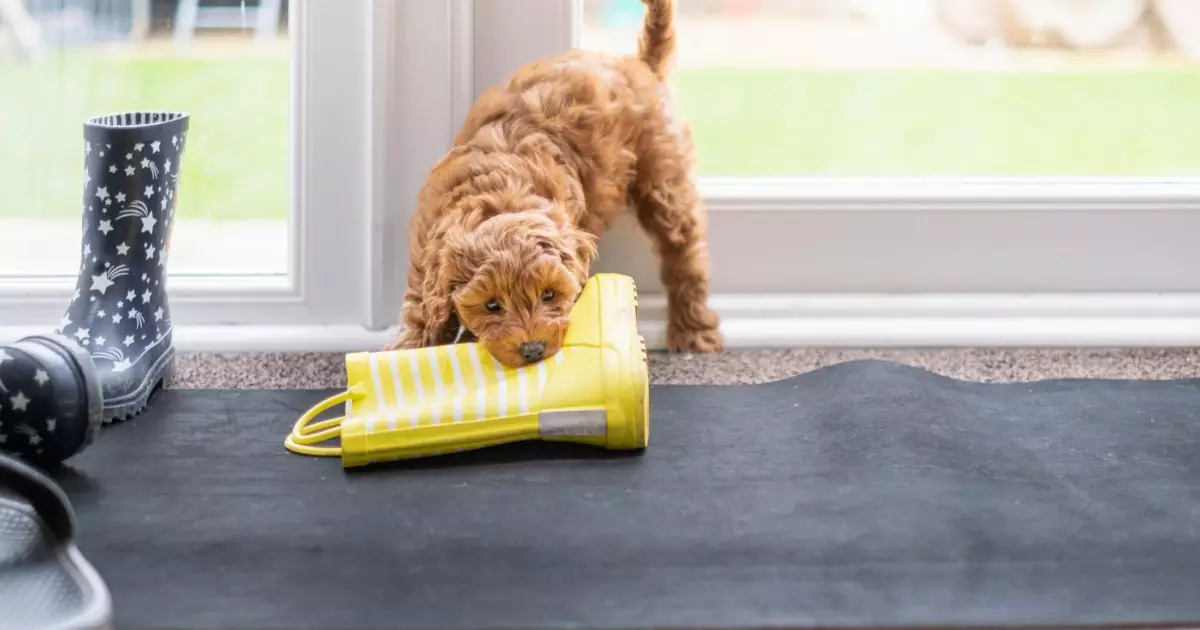Puppies are naturally inquisitive creatures, much like toddlers. They engage with their environment primarily through their mouths, which can lead to some less-than-ideal chewing behavior. This exploratory chewing isn’t just a phase; it’s a fundamental aspect of their development. As a puppy parent, embracing this instinct and channeling it appropriately is key to maintaining harmony in your home.
Chewing is not only a way for puppies to learn about their surroundings but also serves to relieve teething discomfort. Thus, it’s essential for pet owners to acknowledge that, while this behavior is normal, it poses challenges in everyday life if left unchecked. The critical task, then, is to redirect that urge to chew from your prized possessions to items that are safe and beneficial.
One of the first steps in curbing your puppy’s chewing is to adjust your home environment to prevent access to potentially dangerous items. This requires a shift in daily habits. Previously, you might have left shoes by the doorway or toys scattered about, but those days need to end. Instead, consider establishing a designated area for your puppy, such as a comfortable crate or playpen where they can safely explore with supervision.
Regularly scanning your living space for tempting items and moving them out of reach should become second nature. Close doors to areas that hold hazards like valuable decorations or dangerous substances—common household items like chocolate or certain plants can be toxic and must be kept out of reach. This proactive approach minimizes the likelihood of accidents and injuries, fostering a safer environment for your curious companion.
While keeping dangerous objects away is vital, it’s equally important to provide your puppy with enticing alternatives. Engage them with a variety of chew toys that satisfy both their instinct to gnaw and their desire for play. Durable toys like Kongs can be stuffed with food, making them an engaging option that keeps your pup occupied while also providing mental stimulation.
Consider offering different types of toys—some for chewing, others for fetching or tugging. Rubber toys, soft plushies, and even ropes serve different purposes and can make for a well-rounded playtime experience. This not only helps establish appropriate chewing outlets but also turns play into a rewarding and enriching experience.
Redirecting Undesirable Behavior
In circumstances where your puppy does start chewing on something they shouldn’t, how you respond is critical. Implement a firm but kind correction method. A distinct verbal cue such as “Uh-uh!” serves as an immediate indication that their behavior is not acceptable. Following that, redirect them to a proper chew toy or engage them in a simple command like “Sit.” This reinforces positive behavior while simultaneously distracting them from the unwanted action.
Consistency in these practices is crucial. Puppies learn through repetition and reinforcement, so the more regularly you address undesirable behaviors, the faster your puppy will learn what is acceptable.
Physical activity is a significant component in managing a puppy’s energy levels. A well-exercised puppy is often a calmer one, reducing their likelihood of destructive chewing. Incorporating regular walks, playtime, and even puzzle toys into their routine can help effectively channel their energy. These activities not only tire them out but also build a bond between you and your pet.
Mental exercises are equally important. Using training sessions or interactive toys that challenge them to think will keep your puppy’s mind engaged and focused, further minimizing their interest in illicit chewing.
As your puppy matures, their chewing behaviors will generally diminish. With the right strategies in place, you can accelerate the process of managing and redirecting their habits. Remember, patience is vital; as with all aspects of pet parenting, each puppy is unique and will develop at their own pace. Celebrate small victories along the way, reinforcing positive changes while understanding that setbacks may happen.
Managing your puppy’s chewing habits requires a combination of environmental adjustments, appropriate distractions, redirection techniques, and regular physical and mental engagement. By creating a safe and structured space for your puppy to thrive, you set the stage for a happy, well-adjusted adult dog.

